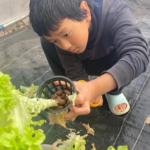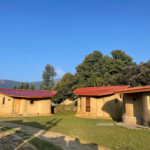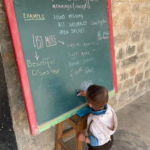Inspiration
Why are we aping the west, at the cost of our own wealth of knowledge? – Lakshyaraj Singh Mewar
I hope we can inculcate the quality of hard work in our children. Where I come from, I am not ashamed to mention that we are taught to touch our teachers’ feet. This happens only in India. To be born as a human being is a big thing, but to be born as an educator is a blessing: Lakshyaraj Singh Mewar
Published
6 years agoon
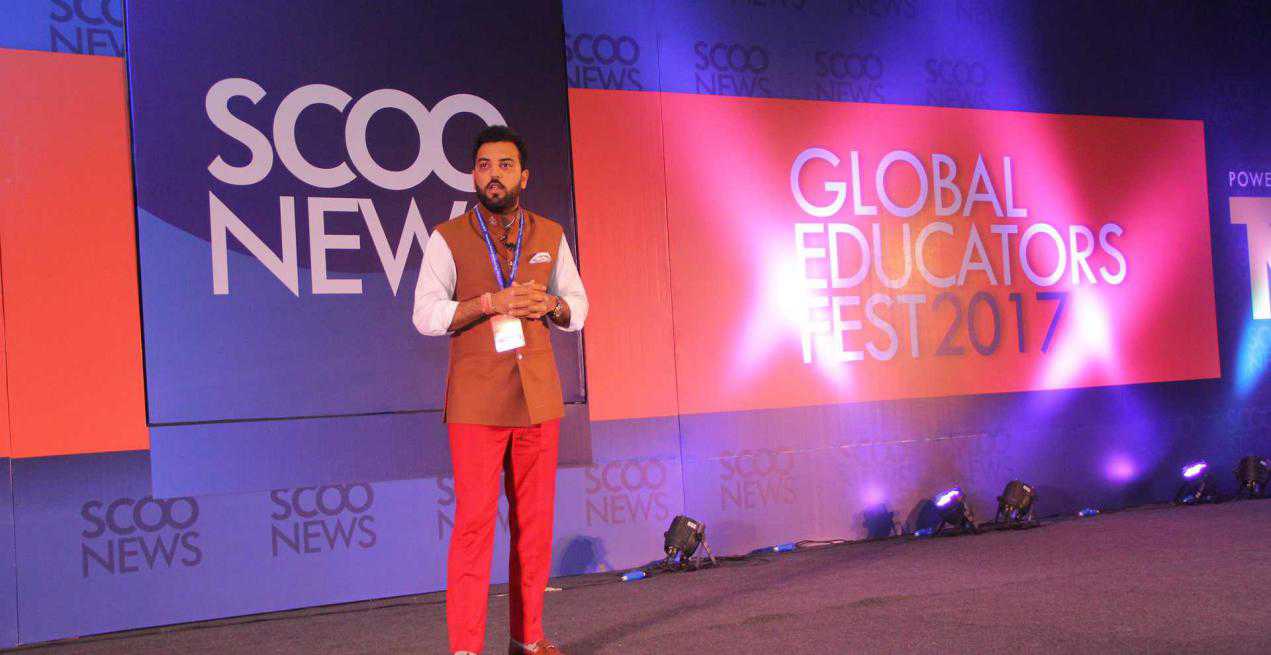
It is absolutely a pleasure and honour to be here amongst this august gathering. I see some of my old school teachers here; if you see even one in the crowd it certainly makes you nervous even if you have spoken before in front of a larger gathering! I want to thank the platform as well for inviting me to be here, speaking on a topic that is very relevant in today’s times. While I was on my way here, looking at the august panel of speakers, I realised the only person who was out of place was myself! I am the last one who should have actually been here, the person who has always sat at the back of the class; if I could have pushed the walls behind the last bench I guess I would have! But what I did realise was that by asking an average student, or a below-average student to come here and speak, what this platform has really done is give respect – not to Lakshyaraj Singh Mewar but to the average student. This is a specialty of Indian culture. This is the strength of our education.
Since yesterday I have been attending the Fest, I’ve been listening to the speakers, to my teachers. Watching the whole atmosphere, two lines come to my mind: ‘Mehez hungama khada karna hamara maqsad nahi, koshish yeh hai ki rut badalni chahiye’. It is not our intention to make a noise but to bring about a change. With so many esteemed personages, principals from different schools gathered together under one roof, it goes without saying that there will be change.
I would like to start by pondering over the importance of discussing the Dignity of Labour. There has been a lot of discussion about Time. There was a time when not everyone had a watch, but everyone had the time. Today everyone has a watch, but nobody has time. ‘Waqt aata hai aur waqt jaata hai, waqt ko sambhalkar rakhiyega, waqt bewaqt kaam aata hain’. This is something we need to truly understand. Time passes, use it with utmost sensibility. We talk a lot about technology. I am not against technology at all, in fact I must be the youngest speaker here; I should be the most tech savvy. When we talk about Facebook, Twitter, Instagram, how many likes, how many friends and followers is all we care about. At home we might not be on talking terms with our family. We are moving away from reality. Technology has indeed brought the world closer but it has also distanced us from each other. Where do we want to go? Looking for life on other planets, who will find out first whether there is life on Mars… My question is, why can’t we find happiness in our lives?
About languages, I want to add that I am not against the learning of new languages. English is an international language, one should know all languages. But having said that, why are we aping the west, at the cost of our own wealth of knowledge? Why are we leaving behind our culture? I was not a popular student; my teachers will vouch for the fact that I spent more time looking out of the window during class. Hindi was not my strongest point, but later I realized the value of our language and how vast, beautiful and scientific it is. We belong to such a great nation; we should use the language in our daily lives, and feel proud of it. Can we carry a message from this stage that our Hindi is a language we should be proud of?
Yesterday a speaker made us aware of Rai Chand… In Rajasthan, we are aware of such a person, Rai Chand. Giving advice is easiest in India and the cheapest. Everybody knows how to advise Sachin Tendulkar on how to make 100 runs. Somebody who has never got a finger injured will dish out advice on how to get a bypass. If you are making a house, be prepared to get advice from someone who has never constructed a house himself.
The second type of people found in our country belongs to the Gyan Chand category, the know-it-all. Let me tell you a small story about a sweet shop. A man strolls into a mithai shop and tells the owner, “This is such a nice shop, you should put up a board, ‘Fresh sweets available here’.” Then a second person comes in, reads the board and says, “Remove the word ‘here’; it’s self-explanatory.” Similarly, more people come in and keep making suggestions. Finally, only the word ‘Sweets’ remains on the board! To cut a long story short, it’s very easy to dole out knowledge.
Other types of people commonly found – Hukum Baaz, who will not do anything, but only give orders! We should beware of such people.
And don’t forget Hoshiyaar Chand, the type who does not need anyone, and believes they know more than Google.
Finally, there is Karam Chand, the kind of people who believe in doing as opposed to merely talking. We need to constantly evolve and work hard. I congratulate Ravi Santlani and SGEF for organising such a fest and gathering so many people under one roof. I hope we can inculcate the quality of hard work in our children. Where I come from, I am not ashamed to mention that we are taught to touch our teachers’ feet. This happens only in India. To be born as a human being is a big thing, but to be born as an educator is a blessing.
You may like
-


Young Birders’ Workshop Opens Registration for Children Aged 10-13 Years
-
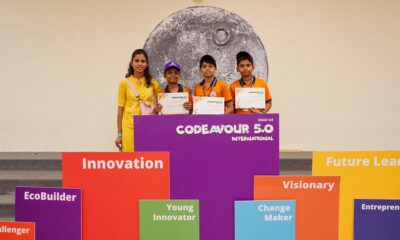

STEMpedia Successfully Completed Codeavour 5.0- India’s National Innovation Fest
-


Reviving School Education: Countering the Coaching Centre Dominance
-


CBSE to Initiate Pilot for National Credit System in Grades 6, 9, and 11
-


The Role of Marketing in Education: Navigating the New Educational Landscape
-


From Overwhelmed to Empowered: Strengthening Educator Skills for Success
-
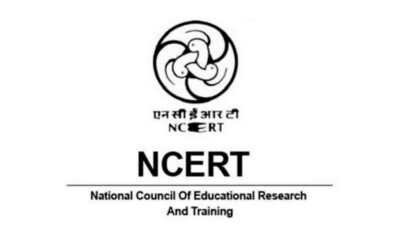

NCERT Introduces Bridge Month Programme for Class 6 Amid Textbook Transition
-
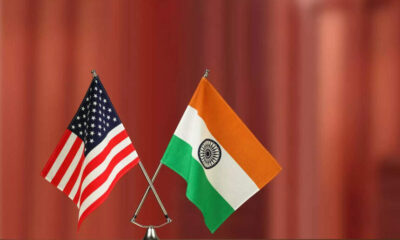

Indian Embassy Advocates for India-US Collaboration in Education Sector
-


Nurturing Healthy Behaviors: The Role of Schools in Shaping Health-Conscious Citizens
-


CBSE Updates Exam Structure for 11th & 12th Class; Concept-based Questions Now 50% of Weightage
Inspiration
Life of My Father: Dr. Jagdish Gandhi, a Pioneer in Education
Published
1 month agoon
March 14, 2024
A little over a month ago papa passed away and as I sit down to reflect on the remarkable journey of my father, Dr. Jagdish Gandhi, I am overwhelmed with a sense of pride and admiration, and the need to share his extraordinary life.
Born in 1934 in the quaint village of Barsauli, nestled in the heart of Aligarh district, his story is a testament to the power of dedication, compassion, and unwavering determination to make a difference in the world.
I remember countless evenings spent with him, engrossed in discussions about education, peace-building, and the importance of serving others. His enthusiasm was infectious, and his dedication to his mission served as a constant source of motivation for me and my siblings. My father taught me the true meaning of leadership – as a responsibility to uplift and empower those around you, regardless of their background or circumstances.
Growing up under the influence of his uncle, a Gandhian freedom fighter, my father was instilled with values of simplicity, service, and social justice from a young age. His longing to meet Mahatma Gandhi was shattered when he fell to an assassin’s bullet in 1948, leaving behind a nation mourning and a young Jagdish grappling with the loss of his idol.
It was this loss that motivated him to become an agent of change in his own right. Inspired by Gandhi’s teachings on service and selflessness, he embarked on a journey of grassroots activism, mobilizing his peers to engage in community service projects aimed at uplifting the lives of those around them. His unwavering commitment earned him the endearing moniker of ‘Jagdish Gandhi’, a name that would become synonymous with his lifelong mission of service to humanity.
Despite the hardships he faced living in a temple and wearing humble attire, he pursued higher education and his tenure as the President of Lucknow University’s Students Union was a testament to his popularity and leadership qualities.
In 1959, he embarked on a new chapter of his life, founding City Montessori School in Lucknow alongside my mother, Bharti Agarwal. What began with just five students blossomed into an educational institution that today serves over 62,000 pupils, with the motto of ‘Jai Jagat’ echoing the principles of peace and unity that defined my father’s vision.
Driven by a fervent belief in the need for a world government to ensure global peace and prosperity, he ventured into politics, winning a seat as an Independent MLA in 1969. However, it was a journey fraught with disillusionment, as he realized that true change could not be achieved through partisan politics alone.
In 1974, during a conference on World Peace Through Education in London, my parents were introduced to the teachings of the Baha’i Faith, which emphasized the importance of unity, spirituality, and global governance. This encounter marked a turning point in my father’s life, leading him to renounce politics in favor of a more holistic approach to peace-building through education and interfaith dialogue.
Freed from the constraints of political ambition, my father devoted himself to the cause of peace education, pioneering initiatives such as international exchange programs and annual International Conferences of Chief Justices of the World to promote the rule of law on a global scale. His efforts were recognized with numerous awards and honorary doctorates, including the prestigious UNESCO Prize for Peace Education. But beyond the accolades and achievements lies a man of remarkable humility and integrity, whose life serves as a beacon of hope and inspiration for all who aspire to make a difference in the world.
My father was so many things to so many people. To his children and grandchildren, he was a doting, loving and sacrificing father and grandfather; to his devoted wife, he was a considerate and protective husband; to his employees, he was a generous, just and empowering boss, instilling in them a sense of their own capacities, believing in them, giving them autonomy and agency and trusting them. To his critics, he was forgiving, charitable and munificent. He rarely disappointed anyone and never turned away any soul. He went to every wedding and family celebration he was invited to, from the humblest employee to the highest.
As his daughter, I am proud to carry forward his life’s work, knowing that his spirit lives on in the countless lives he touched and transformed. His example continues to inspire me to stand up for what is right, and to never lose sight of the power of love and compassion to create positive change in the world.
Let us all remember the profound impact that one individual can have on the world, and strive to emulate my father’s unwavering dedication to service, justice, and peace. May we be guided by his example, and may his legacy inspire generations to come.
Authored By:
Professor Geeta Gandhi Kingdon,
Chair of ‘Education Economics and International Development’,
University College London
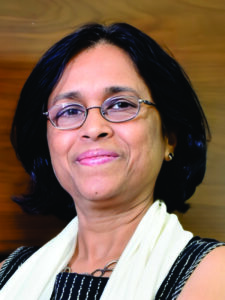
Geeta Gandhi Kingdon, Chair of ‘Education Economics and International Development’ at UCL Institute of Education, excels in the economics of education. Prior to this, she served as faculty at the Department of Economics, University of Oxford for 10 years. She advises global organizations like the World Bank and the EU, focusing on education aid in developing nations. Recognized for her impactful contributions, she received an Honorary Doctorate from Kingston University London. Notably, she manages the City Montessori School, Lucknow, the world’s largest school, recognized by UNESCO for peace education.
Inspiration
International Women’s Day 2024: Are We Not Special?
Published
1 month agoon
March 8, 2024
The scene opens in a cozy study, where a mother Nishi, sits on a couch reading the newspaper. Her son, Neil approaches with a questioning look on his face.
Neil: Ma, what does it mean to be a woman?
Nishi: [Sits up with a start and puts the newspaper aside] Well, that’s quite a question for a 6-year-old, Neil, but let me try to explain it in a way that you will understand.
Neil: Okay ma! Please tell me.
Nishi: Imagine you are a superhero and have this special power.
Neil: Like Spiderman and flying making webs all around?
Nishi: Well, something like that. Being a woman is like having the superpower of feeling. It means to be able to connect with people with the heart, without even touching.
Neil: Hmm, like when you know exactly what I want to eat when I return from school even though I do not ask you for it?
Nishi: Exactly so, my son. Together with that superpower, there is another added one. Do you want to know what that is?
Neil: What’s that?
Nishi: It is the infinite power of love. No matter what you do, a mother’s love for her child is always there, strong and 100 bags full.
Neil: Even when I went and pinched my little sister’s cheeks thinking it would make her happy?
Nishi: Yes, even then. Though it was a little difficult then for I had to show you the difference between what makes you happy and what makes the little one sad. You did take some time to understand that, and that my son is also a super power that we have. Keeping a balance when there are so many little things to be looked after.
Neil: [Grinning sheepishly] So, being my Ma is really like being a superhero twice over?
Nishi: [Laughs] You could say that. What do you see I do not wear a cape, like spiderman does. I wear my heart on my sleeves?
Neil: Where is your heart? Which sleeve? Please can you show me that?
Nishi: [Pulling her son close to her in a tight hug] Can you hear the heart beat? Remember it beats for you and your sister and your father and all those whom you love.
Neil: That’s cool Ma. I can hear it loud and clear. Is Dad a superhero too?
Nishi: Absolutely! When he comes come ask him to hold you tight in his arms and you can hear his heart beat on his sleeves. Remember his heart too beats for you and all of us.
Neil: You have taught me something very important today, Ma.
Nishi: [With a smile] What would that be, my son?
Neil: We learn from whatever we do, wherever we are and whoever we are with.
Nishi: Why did you ever doubt that?
Neil: I am seeing it through my Spiderman lenses now and let me tell you what happened today in school, superhero.
Nishi: I am all ears.
Neil: I wore my costume and went on a rollercoaster ride. First, we went up and down with numbers, then I helped Rishi to take a wild turn with spellings and finally we all looped around with learning about earthworms and caterpillars!
Nishi: Sounds like a fantastic ride, spiderman. Did you overthrow any enemies today?
Neil: Oh yes Ma! I climbed the ‘Mount Fraction’ and spun the largest web around the ‘Spelling Summit’.
Nishi: That was amazing. Did you discover any treasures along the way, son?
Neil: Oh, yes! As I was looping around the library, I discovered the hidden gems of knowledge there and collected quite a few in my big, red sack.
Nishi: What did you learn from this exploration, my superhero?
Neil: Learning is such an adventure, ma! Perhaps it is the greatest adventure of all. Now that we are all superheroes with our hearts on our sleeves, we can be fearless inquirers, brave thinkers and open-minded travellers.
Nishi: I have no doubt you will, my little Spiderman, be ready for every new challenge that life throws at you.
Neil: [hugging his mother] With my superhero ma with me, learning is going to be one great adventure.
Nishi: Light out time! Off to bed, son.
When Nishi goes to her room a little later, she finds a little envelope tucked under her pillow. She opens it and finds some lines penned in a familiar handwriting, her husband’s. She looks around and finds him fast asleep, and does not disturb him. So quietly under the moonlit night she sits by herself and as the tears come welling up, she reads these heartfelt lines.
TO OUR SUPERHERO: MA
In the rich tapestry of time, she weaves her grace,
A woman, in every hue, a divine presence.
Her worth, not measured in gild or gleam,
But in the strength of her being, God’s beautiful dream.
In her lap, the universe finds its peace,
A reservoir of love for families.
With each role she pens and embraces,
A new story, a new character emerges.
A child is nurtured with utmost care,
With hope and joy, beyond compare.
A mother, a wife, a sister, her roles unending,
She paints a new picture, a melody, unrelenting.
Her wisdom, a treasure trove, ageless and wise,
A harbour for stormy seas, a rainbow in the skies.
She is the creator of dreams, a beacon of light,
Warm food for all, and a bedtime song for the night.
A woman transcends the bounds of time and space,
For she is a marvel of creation, in God’s own image.
This story and poem is Authored By:
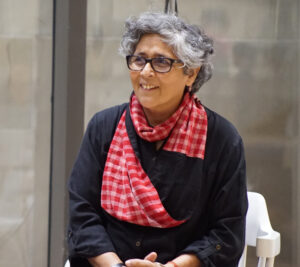
Sudeshna Sengupta
Director- Academics,
Vedanya International School, Gurugram
Edutainment
A Voice for All Ages: The Enduring Legacy of Ameen Sayani in Indian Education
Published
2 months agoon
February 21, 2024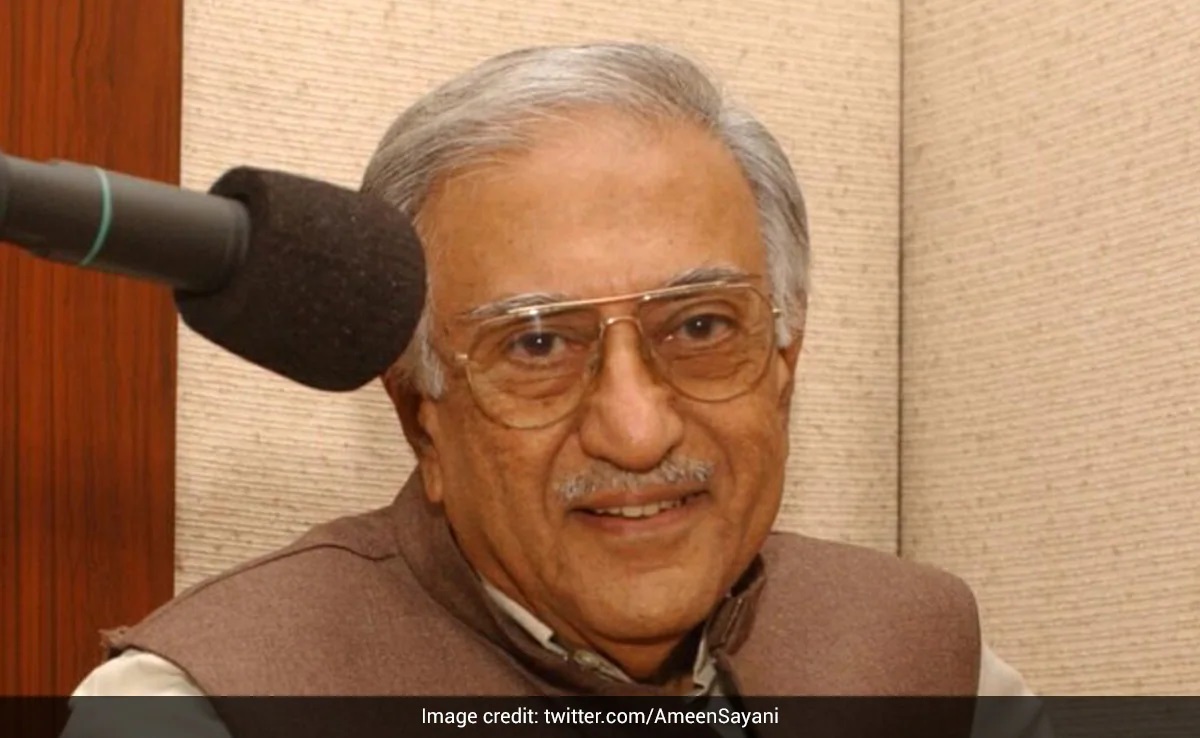
In the echoing halls of Indian broadcasting, the voice of Mr. Ameen Sayani resonated with a warmth that touched millions, uniting a diverse nation in the golden era of radio. Today, at the age of 91, as we bid farewell to this stalwart of the airwaves, his absence leaves a silence that is palpable and profound. Mr. Sayani was not merely a radio presenter; he was a cultural icon who personified the soul of India, a voice that became the soundtrack of our collective memory.
The voice of Mr. Ameen Sayani has been a familiar comfort in the homes of countless Indians, a testament to his incredible journey in broadcasting. He is best known for his work on “Binaca Geetmala”, a radio program that became a weekly ritual for listeners, showcasing the latest and greatest in Hindi film music. His distinctive voice and charming style turned the show into an institution, one that charted the musical landscape of India for years. His journey in the world of radio began at a young age, and his natural ease behind the microphone made him a household name. Through his programs, he didn’t just play songs; he wove tales around them, connecting with his audience on a personal level, making each listener feel as though they were a part of a larger Indian family.
Why should Mr. Sayani’s legacy be a part of our schools and colleges? It’s simple: he was a master storyteller and communicator, whose skills go beyond radio. He showed us the power of reaching out and touching hearts, of crafting stories that linger in the memory. These are the kinds of lessons that are vital for every student, no matter what they want to do in life.
Mr. Sayani’s voice brought people together, crossing barriers of region and language. His approach to communication is something we should all try to learn from – it’s about engaging with others, being culturally aware, and building a sense of community with our words.
His radio shows did more than entertain. They taught listeners how to listen to each other, to share in the joys and sorrows of others, reflecting the society of the time. As educators, we should aim to teach our students not just to be good at a job, but to be good people – and Mr. Sayani’s life and work offer rich lessons in this respect.
To include Mr. Sayani in our curriculum is to honor a man whose passion became the heartbeat of a nation. We should use his story to inspire students to find their own voices, to tell stories that matter, and to understand the incredible impact they can have on the world.
As we remember him, let’s bring the spirit of his work into our classrooms, so that the power of his voice continues to inspire future generations to make their own lasting impact.
Inspiration
Hidden Figures: A Film Every Student Should Watch and Why
Published
2 months agoon
February 13, 2024
In the vast tapestry of cinematic storytelling, few films carry the weight of transforming our understanding of history and the unsung heroes within it quite like “Hidden Figures.” This masterpiece not only unfolds the extraordinary tale of three African-American women who were pivotal to NASA’s success in the space race but also serves as a beacon of inspiration for students across the globe. As the world recently celebrated the International Day of Women and Girls in Science on 11th February, it is imperative to delve into why “Hidden Figures” is a must-watch for every student.
“Hidden Figures” brings to light the incredible journey of Katherine Johnson, Dorothy Vaughan, and Mary Jackson, portrayed with compelling depth by Taraji P. Henson, Octavia Spencer, and Janelle Monae, respectively. These brilliant minds overcame the dual hurdles of racial and gender bias to lay the groundwork for John Glenn’s historic orbit around Earth. Their story is not just a chapter of NASA’s triumphs but a testament to the indomitable spirit of those who dare to dream big and defy societal constraints.
For students, “Hidden Figures” is much more than a history lesson; it is an exploration of the values of perseverance, integrity, and teamwork. The film adeptly captures the essence of these values, showing that success is not the reserve of a privileged few but achievable by anyone with the talent and determination, regardless of their background. This is the story of three strong women who are independent, making a way of their own in a time where people do not even believe that NASA hires women and that too women of colour. When they ask for what they deserve, they are frowned upon and rejected. They are expected to know what their place is and what is the way to look like a white person. Still, these women thrive. Today, the situation has improved for better but our students should understand what it took for the trailblazers and women like these three to bring the world where it is today.
The narrative rhythm of “Hidden Figures” mirrors that of an underdog story, making it relatable and engaging for a younger audience. It offers a linear and steady progression, showcasing the personal and professional challenges these women faced, their initial setbacks, and their ultimate triumph. Furthermore, the film’s emphasis on education and intellectual prowess as tools for breaking barriers is a critical takeaway for students. It highlights the importance of STEM (Science, Technology, Engineering, and Mathematics) education and the role it plays in shaping the future. “Hidden Figures” demonstrates that knowledge and skill are powerful agents of change, encouraging students to pursue their interests in these fields with zeal.
The film does not shy away from the harsh realities of the era it depicts but chooses to focus on the triumph of intellect and determination over discrimination and adversity. This balanced storytelling approach makes “Hidden Figures” an educational tool that transcends the classroom, imparting lessons of equality, respect, and the pursuit of excellence.
Hidden Figures is more than just a film; it is a catalyst for change, inspiring students to recognize and challenge the societal limitations placed upon them. It encourages a deeper appreciation for the contributions of women and minorities in science and technology, urging a more inclusive recognition of achievement in these fields. For these reasons and more, it is a film that every student should watch, serving as a reminder that history is made by those who dare to believe in the possibility of the impossible.
Education
Farewell to a Pioneer: Dr. Jagdish Gandhi’s Enduring Legacy in Education
Published
3 months agoon
January 22, 2024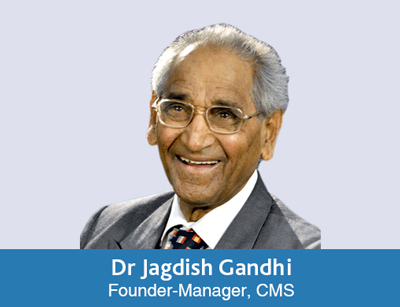
ScooNews deeply mourns the loss of the iconic educator, Dr Jagdish Gandhi, the visionary founder of City Montessori School (CMS), who passed away today. His unparalleled legacy in Indian education and the void his departure leaves will be deeply felt across the educational landscape. We extend our heartfelt condolences to the Gandhi family and the vast community of educators, students, and parents profoundly touched by his lifelong commitment to education. ScooNews salutes Dr Gandhi for his significant contributions and celebrates the indelible mark he has left on the world of education.
In 1959, Dr Gandhi began his mission to transform mindsets through education with just five children and ten US dollars in borrowed capital. This marked the humble beginning of CMS in Lucknow, India. His journey, characterised by dedication, vision, and an unwavering commitment to peace through education, was influenced by luminaries such as Mahatma Gandhi and Vinoba Bhave. Dr Gandhi saw education as a powerful vehicle for cultivating peace, beyond mere negotiations and top-down policy efforts.
For 63 years, Dr Gandhi’s life was a testament to his mission. His days were filled with relentless work, sleepless nights, and a dedication that recognised no weekends or holidays. His focus was to nurture young minds globally, instilling values of peace, unity, and global citizenship. This dedication saw CMS become the world’s largest school, a testament to Dr Gandhi’s vision and the community’s belief in his mission.
Dr Gandhi’s holistic approach to education emphasised not only academic learning but also the human and spiritual development of a child. He fostered leadership, social consciousness, and global citizenship. His innovative initiatives, such as the Indo-Pak children’s friendship initiative and hosting international events, aimed to broaden youth understanding of peace and unity.
The loss of Dr Jagdish Gandhi is felt not just within the CMS community or India, but across the global educational landscape. His life demonstrated the transformative power of education. As ScooNews reflects on his remarkable journey, we are reminded of his resilience, dedication, and visionary leadership.
In his honour, let us reaffirm our commitment to the ideals he championed. We will continue nurturing young minds, guiding them towards peace, unity, and understanding. Dr Gandhi’s physical presence will be dearly missed, but his vision, ideals, and spirit will continue to inspire future generations.
Inspiration
A Former Monk And His Abode of Love: Jhamtse Gatsal
Published
4 months agoon
December 5, 2023By
Liyum Karga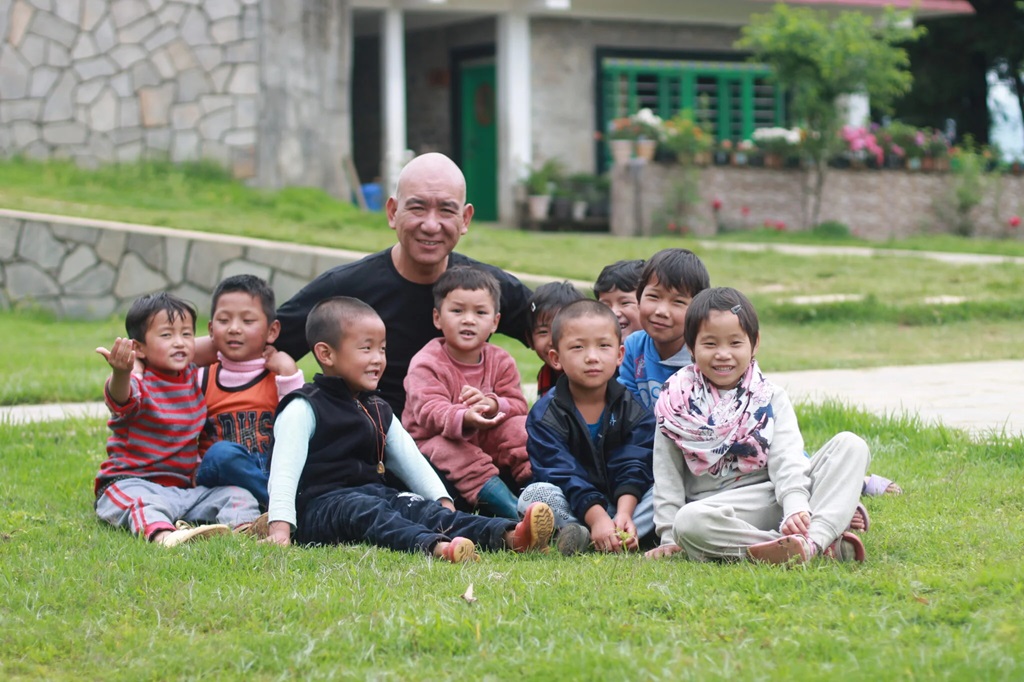
There are only a handful of experiences in everyone’s life that get etched in one’s heart for a lifetime. My visit to Jhamtse Gatsal qualifies as one such experience; special, unforgettable, and forever a part of me.

View from Jhamtse Gatsal: Tawang Chu River marks the border with Bhutan on its left.
‘Jhamtse Gatsal’ literally, translates to ‘garden of love and compassion’. Standing true to its name, it’s a place where young souls are nurtured with love and tended to with compassion, much like seeds sown in a garden. It was opened in the year 2006, with 35 kids under its care and today it is home to 128 children.
The physical location of Jhamtse Gatsal is as enchanting as the philosophical essence behind its inception. About 50 Km away from the noise and bustle of the district headquarters in Tawang, it is located in the remote and picturesque Lumla sub-division. Built atop a hill, it is surrounded by majestic mountains that are lush green during summer and sparkling white during the winter. It overlooks the mystic Tawang Chu River meandering through the foothills and demarcating the international border with Bhutan to its left.
Far from the madding crowd and nestled in nature’s bounty, it is not an overstatement to say that the place satiates the yearnings and heals the maladies of the soul. Jhamtse Gatsal is a world in itself; complete and self-sustaining. The story of how it came into existence is nothing short of awe-inspiring.
Jhamtse Gatsal is the brainchild of Mr. Lobsang Phuntsok, the former monk who left his fairly comfortable and thriving life in America and came back to his birthplace Tawang, to give back to the place and its people, all that was in his capacity. He is fondly addressed as Gen-la (‘Gen’ is a Tibetan term for an honored teacher and La is added to indicate respect. Together, Gen-la translates to ‘honorable teacher’), by everyone in Jhamtse Gatsal community and beyond it, by others in Tawang. Gen-la’s vision, grit, and conviction to transform lives and mold them, comes from the childhood he lived.
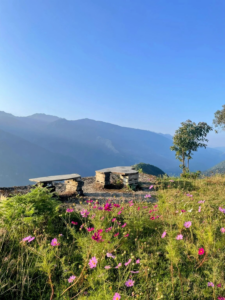
A sit-out spot on campus overlooking Bhutan.
Born to an unwed mother, he was looked upon as “an uninvited guest in the universe”. Even though the pain and embarrassment his birth brought to his mother and family are not the best memories to go back to, he does not shy away from embracing and sharing his story. He rather acknowledges its instrumentality in shaping the person he is today. He recalls being a difficult child; often detested by the villagers for his notorieties. His loving grandparents saw no way out to mend his ways and finally at the age of 7, with the earnest hope for his life to take a better turn, he was sent away to a Buddhist monastery down south of the country to live a monk’s life. Notwithstanding, he recalls his young self continuing with his old ways in the monastery. Eventually, the faith, patience, and compassion shown by his Gurus set him on the path of self-transformation. Reaffirming the fact that behind different facades, lies the inherent human goodness in each one of us.
The children fostered by Gen Lobsang La at Jhamtse Gatsal share stories similar to his own; where the mere accident of birth in a certain family or circumstance left them in a position of pain or disadvantage. His mission is to give these children a fair chance at life and more importantly, guide them to transform themselves into better humans capable of being agents of change wherever they go, in making this world a better place to live in. He shares that, to love, care, provide for, and see the children happy is like time traveling back to his formative years; giving him a chance to relive his childhood through them and experience everything he missed out on. It is true indeed that the love we give is the love we keep. The only way to retain love is to give it away.
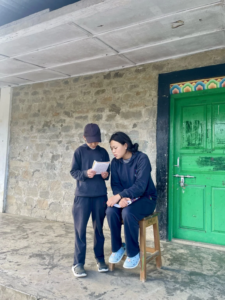
Sharing knowledge.
In his 50s now, Gen Lobsang la has the exuberance of youth and his passion is evident in the joy with which he shares about his mission and the future plans he has for Jhamtse Gatsal. He is backed by a team of dedicated teaching and non-teaching staff, who are not only competent in their respective specialties but also share some common core values. Benign in their approach, they are professional with a human touch and value, laying the base of a healthy work environment.
Jhamtse Gatsal campus is at present, broadly divided into three main sections – the children’s residential complex, the academic block, and an area designated for building a residential colony in the near future. Together, they make up the Jhamtse Gatsal Community. Every aspect of Jhamtse Gatsal is well thought-out and holds meaning. The children’s residential complex is sectioned into four parts, each one of them a ‘Khemsang’, meaning a family house’. The four khemsang have been named – Panggyen, Ganghla, Serchen, and Gurkum after rare plants with medicinal properties and healing capabilities. The thought behind this is to bespeak and symbolize self-healing and then, the the ability to heal others. It is rightly said,
“Hurt people hurt people. And healed people heal others. Free spirits free others, enlightened people enlighten others”.
Each khemsang and its children are looked after and taken care of by one ‘Ama-la’ (‘Ama’ means mother, ‘La’ is added to express respect. ‘Amala’ translates to respected/beloved mother). The four Ama-La(s) manage the four Khemsang(s) just like a mother does in a family. Along with the family-like set up with a mother figure, the older children are also taught to look after and care for the younger ones just like siblings do in a family.
It leaves no room for bullying or domination and instead, develops qualities of affection, a sense of responsibility, and mutual love between children of different age groups. These are just a few subtle and manifest ways in which the system devised at Jhamtse Gatsal empowers children and nudges them to a better path.
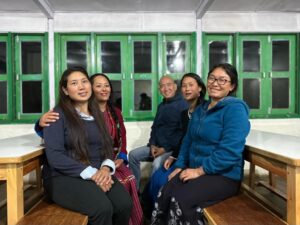
Gen-La with house mothers/Ama-la(s)
Keeping the ideals of a family, the mess at Jhamtse Gatsal has no fixed menu that repeats week after week. The Ama-La in charge decides what is to be fed. From ‘Thentuk’ (Hand-pulled noodle soup with mixed vegetables) to healthy curries, every meal is cooked with love and dedication.
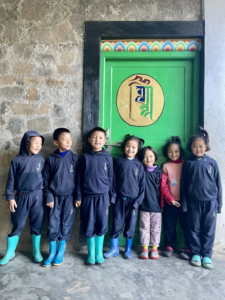
Happy children posing for a photo after their morning study hour.
One of the inspiring routine events I was privileged to take part in, was the weekly one-meal fast (Wednesday dinner). It is not compulsory for guests or even for others in the community to participate, it is a completely voluntary choice. Dinner is still served for anyone who decides or feels the need to eat, along with the younger lot who are strictly exempted from participating.
The apportioned ration for those days is saved and donated to the needy in the villages around. In explaining the idea behind this observance of fast, Gen-La re-defined the notion of charity and sacrifice for me. He says the right way to gauge our dedication and love for fellow human beings is to see what we can forgo for someone else. He says, to be generous, donate, help only when there is an overflowing abundance, or give away that which we don’t want/wish to discard, hardly captures the spirit of charity or qualifies as one.
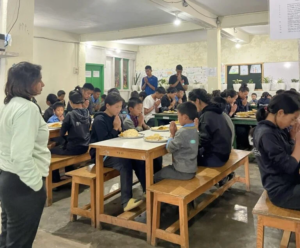
Taking a moment to thank before the meal.
This made me rethink the idea of donating clothes we don’t want, and the leftover food on our plates that we give away, as an act of kindness. Sure, something is better than nothing and to feed an empty stomach is better than dumping it in a thrash bin. But it made me wonder that perhaps, cutting out from our portion for someone else is to treat the other person with respect, as equal sentient beings to share and care for, and not subjects of our kindness born out of a condescending privilege. Along with the standard curriculum for each class, children are engaged in a myriad of extracurricular activities, skill training, and other creative projects. The goal is to ensure an all-around development encompassing emotional, spiritual, mental, and physical health.
Each child is counseled, encouraged, and helped to polish their unique strengths by abled teachers and Gen-La, together. Instead of trying to fit everyone in a specific predesigned box, each child is allowed to bloom at its own pace and shine in their unique domains. Teaching the science and art of sustainable living is a major focus and the base on which the edifice of Jhamtse Gatsal Community is built.
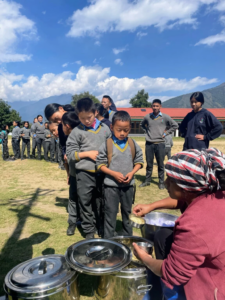
Children in the queue for an afternoon snack.
Children are exposed to lessons and activities that arm them to live scientifically and in harmony with nature, through fun and interesting engagements. From plastic recycling, waste management, and vermicomposting to arts and crafts, the children at Jhamtse Gatsal are taught and trained by teachers, Ama-la(s), and enthusiastic allies from across the world. Other than professional and academic lessons, it is ensured that children learn basic life skills – cooking, cleaning, and self-care across genders.
Jhamtse Gatsal is a beacon of hope for the world we live in today. In a world of information overload and easy access to social media, it is sometimes dispiriting to witness the tragic events happening across the world. At such a time, Jhamtse Gatsal is a place that felt refreshing and reaffirmed my faith in a shared brotherhood of humanity with the promise of a better, kinder, and harmonious world. In my assignment to write for The Borderlens, I feel fortunate to have discovered my Shangri-La at Jhamtse Gatsal Children’s Community; a place that felt like a remotely hidden, beautiful utopia.
Learn more about Gatsal: https://linktr.ee/jhamtsegatsal

Liyum Karga
The author holds a Master’s degree in Sociology from Jawaharlal Nehru University, Delhi, and is an avid reader with a keen interest in the intersection of gender, class, and identity.
Education
Remembering Sardar Patel: Observing Ekta (Unity) in Education
Published
6 months agoon
October 31, 2023
Every year, on October 31, India comes together to observe Ekta Diwas or National Unity Day, a significant occasion that commemorates the birth anniversary of Sardar Vallabhbhai Patel, a stalwart in India’s struggle for independence and the nation’s first Deputy Prime Minister and Home Minister. Born in 1875, Patel’s legacy reverberates through the annals of history, especially for his pivotal role in integrating the princely states and colonial provinces, shaping the modern map of India post its independence from British rule.
In 2014, the Government of India declared this day as National Unity Day, a heartfelt tribute to Sardar Patel’s monumental contributions to the nation’s unity, integrity, and security. This declaration signifies more than just a date on the calendar; it embodies the collective strength and resilience of India against internal and external threats.
The celebrations on National Unity Day are vibrant and diverse, reflecting the essence of India’s rich cultural tapestry. Various activities, such as runs for unity, pledge-taking ceremonies, cultural programs, debates, quizzes, essay competitions, and exhibitions about Sardar Patel’s life, mark the day. The focal point of these celebrations is the Statue of Unity, the world’s tallest statue standing at 182 meters (597 feet), dedicated to Sardar Patel. This colossal statue, situated near the Sardar Sarovar Dam on the Narmada river in Gujarat, Sardar Patel’s home state, was inaugurated by Prime Minister Narendra Modi on October 31, 2018.
National Unity Day is not merely a ritual; it is a day of inspiration. It urges the citizens of India to emulate Sardar Patel’s ideals of unity, patriotism, and selfless service. Beyond that, it serves as a reminder, urging the nation to recall the sacrifices and struggles of the freedom fighters who toiled for India’s independence and integration. It is a day to cherish India’s diversity, a unique feature of its culture and identity, and a day to recommit ourselves to preserving the unity, integrity, and sovereignty of our nation.
This day is a call to action, reminding every Indian of their duty towards their motherland. It instills a sense of national pride, fostering a spirit of belonging among the citizens. National Unity Day promotes harmony and brotherhood, serving as a beacon of India’s secular and democratic values enshrined in its Constitution. It strengthens our resolve, reminding us that as a united nation, we can face any challenge that comes our way.
National Unity Day stands as a testament to India’s unity in diversity. It is not just a tribute to Sardar Patel; it is a celebration of his legacy, a legacy that unites the hearts of every Indian. On this day, we salute him not just as a leader but as an icon of national unity, reminding us of the strength we possess when we stand together as one, undivided nation.
As we observe National Unity Day, let us reflect on Sardar Patel’s wisdom and vision. Let us embrace the diversity that defines us and work hand in hand to build a stronger, more united India for the generations to come.
Inspiration
World Students’ Day: Celebrating Young Indian Entrepreneurs Shaping the Future
Published
6 months agoon
October 16, 2023
On the occasion of World Students’ Day 2023, celebrated on 15th October 2023, we are showcasing stories of student entrepreneurs who are nothing less than an inspiration. They have left their indelible mark on the world through their work and innovation
Student entrepreneurs are young people who start their own businesses while pursuing their education. They are driven by their passion, creativity, and innovation to solve problems and create value in the market. Student entrepreneurship is a growing phenomenon in India, as more and more students are taking up the challenge of becoming their own bosses. According to the Global Entrepreneurship Monitor (GEM) Report 2020-21, approximately 81 percent of youth in India reported having the skills and knowledge needed to start a business. A survey by Amway India also revealed that over 60 percent of students in the country consider entrepreneurship as a good prospect for earning a livelihood. Some of the successful student entrepreneurs in India include Ritesh Agarwal of OYO Rooms, Bhavish Aggarwal of Ola Cabs, and Kunal Shah of Freecharge. Student entrepreneurship can be a rewarding career option for young Indians who want to make a difference in the world.
Aadit Palicha and Kaivalya Vohra are the young entrepreneurs behind Zepto, India’s fastest-growing delivery platform that promises to deliver anything within 10 minutes. The duo met as childhood friends in Dubai and later enrolled in Stanford University, where they dropped out to pursue their dream of building a disruptive startup.
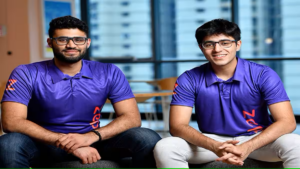
Zepto was launched in Mumbai in 2021, amid the COVID-19 pandemic, when the demand for online delivery services was soaring. The company leveraged its network of hyperlocal warehouses and delivery partners to offer a wide range of products, from groceries and medicines to electronics and fashion, at affordable prices and lightning speed. The company soon attracted the attention of investors and customers alike, reaching a valuation of $200 million in just one month of operation. By the end of 2022, Zepto had become a unicorn, valued at $900 million, and expanded to over 20 cities across India. The company also made history by making its co-founders the youngest billionaires in India, with Aadit Palicha’s net worth estimated at Rs 1,200 crore and Kaivalya Vohra’s at Rs 1,000 crore.
Palicha, just 23-year-old and Vohra, in his early 20’s have also been recognized for their achievements by various prestigious platforms, such as Forbes’ 30 Under 30 for Asia, Times of India’s Unstoppable 21, and Wikitia. They are regarded as the rising stars of the Indian startup ecosystem and an inspiration for many aspiring entrepreneurs.
Tilak Mehta is a 15-year-old entrepreneur who founded Paper n Parcels, a delivery platform that offers same-day delivery services within the city at low costs. He started his business when he was 13 years old, after facing a problem of getting his books delivered from his uncle’s place. He came up with the idea of using the Mumbai Dabbawalas, who are known for their efficient and reliable delivery of lunch boxes, to deliver other items as well.
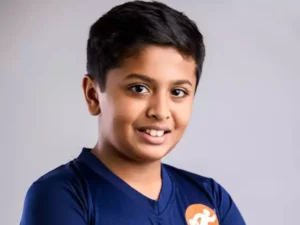
Paper n Parcels has grown to become one of the most successful startups in India, with an annual turnover of Rs 100 crore. The company provides shipping and logistics solutions to various businesses, using its online platform and network of partners and suppliers. Paper n Parcels also offers value-added services such as parcel tracking, order management, and shipping insurance.
Tilak Mehta is an inspiration for many young aspiring entrepreneurs in India. He has been recognised by various prestigious platforms such as Forbes’ 30 Under 30 for Asia, Times of India’s Unstoppable 21. He is also a TEDx speaker and the youngest Forbes panellist. He believes that age is no barrier to innovation and success.
Divya Gandotra Tandon is a rising star in India’s entrepreneurial landscape. She is the founder and director of Scoop Beats Private Limited, a company that provides digital media solutions and content creation services. She is also the chief operating officer of ASTNT Technologies Private Limited, a company that offers web development, app development, and digital marketing services.

Divya started her career as a tech YouTuber at the age of 13, with a channel named Technical Divya. She later changed it to Tech Divya, which has over 30 thousand subscribers. She has collaborated with brands like Aquaconnect, Lazy Gardener, Coolpad, Infinix, and ASCENT Technologies. She has also attended launch events and confidential meetings of various tech companies.
Divya is not just an entrepreneur but also an influential figure in various domains. She is also the chairperson of the KiranPrakash Social Welfare Foundation, a role that reflects her commitment to giving back to society and making a positive impact.
Pranjali Awasthi is a teenage prodigy who has made a mark in the world of AI with her startup, Delv.AI She founded the company in 2022, when she was just 15 years old, and has raised nearly Rs 4 crore in funding at a valuation of Rs 100 crore.

Awasthi’s passion for technology and entrepreneurship was inspired by her father, who is a computer engineer and taught her coding when she was seven years old. She moved from India to Florida when she was 11 years old, where she got access to computer science classes and competitive math programs. She also landed an internship at the research labs of Florida International University, where she worked on machine learning projects.
Advait Thakur is a young and dynamic entrepreneur who has made a name for himself in the Indian tech industry. He is the founder and CEO of Apex Infosys India, a company that provides innovative solutions in automation, networking, and digital media. He is also a computer programmer, an AI researcher, and a tech influencer.

Advait’s passion for technology started at an early age. He launched his first website at the age of nine and became a Google, Bing, and Hubspot certified professional. He has worked with Google’s AI and Cloud Platform for several years and has developed various applications and projects using them. He has also collaborated with brands like Aquaconnect, Lazy Gardener, Coolpad, Infinix, and ASCENT Technologies.
Advait is not just a successful entrepreneur but also a social change-maker. He co-founded Crophle, a social enterprise that aims to improve the agricultural supply chain and empower small farmers. He is also the chairperson of the KiranPrakash Social Welfare Foundation, a non-profit organization that works for the welfare of underprivileged children and women.
Inspiration
Nurturing Teenage Minds: The Imperative Need for Mental Health Awareness in India’s Curriculum
Published
6 months agoon
October 9, 2023By
Anvi Kumar
In the bustling classrooms of India’s educational institutions, among the faces of countless teenagers like Hunar, Janhavi, Krishh, and Zahra, lies an untold story- the story of silent battles with mental health. India’s youth faces a silent epidemic of mental health issues, and it is time to address these crisis head-on through an essential addition to our curriculum with mental health awareness. Anvi Kumar, Founder, of The Mind Canvas, discusses through a real-life example the importance of mental well-being among children.
The Silent Epidemic Among Teens
Among the many statistics and data points that highlight India’s mental health crisis, it is alarming to note that teenagers are particularly vulnerable. Hunar, a bright 14-year-old student from New Delhi, has felt this firsthand. The pressure to excel academically, paired with societal expectations, took a toll on his mental well-being. Like many of his peers, Hunar struggled with anxiety and stress.
Janhavi, his classmate, has her own battles. The relentless competition for college admissions and the burden of expectations weighed heavily on her shoulders. She realized that academic success should not come at the cost of her mental health.
Krishh, in their class, spent hours online, finding solace in the virtual world. While the internet offered a sense of connection and escape, it also presented its own set of challenges, such as cyberbullying and the addictive allure of screen time.
Meanwhile, Zahra, grapples with Obsessive-Compulsive Disorder (OCD), a condition that made her daily life a constant struggle. The stigma surrounding mental health issues only made her battle more arduous.
Breaking the Silence Through Education
Hunar, Janhavi, Krishh, and Zahra represent countless teenagers who need support and understanding. These young minds are not just future leaders but also the heart of our society. We must acknowledge their emotional well-being as the foundation for a brighter future. Mental health education in our curriculum is the first step in this direction. It helps students like Hunar understand that they are not alone, that it’s okay to ask for help when they need it, and that their mental health matters just as much as their grades. Janhavi, having experienced the struggles firsthand, believes that discussing mental health openly in schools can break the stigma and normalize seeking help when needed. She’s convinced that such discussions would have helped her navigate the turbulent waters of adolescence more effectively. Krishh, recognizing the allure and pitfalls of the internet, emphasizes the importance of teaching teenagers how to manage screen time, navigate online challenges, and foster healthy offline relationships. Zahra, with her personal battle against OCD, knows that early education about mental health would have helped her understand her condition better and seek treatment sooner.
A Personal Approach to Education to create a lasting impact, mental health education must be personalized and integrated across subjects and grade levels. It’s about fostering empathy and understanding among students. It’s about equipping educators like Hunar’s teacher with the tools to recognize signs of distress and provide support. Hunar, who once felt overwhelmed, now finds solace in knowing that he can discuss his anxieties openly with his teachers and peers. Janhavi’s school has introduced regular sessions on stress management and emotional well-being, making her academic journey more manageable. Krishh’s school offers guidance on responsible internet use, empowering him to make informed choices online. Zahra’s struggles with OCD have become less isolating as her school promotes understanding and acceptance of mental health challenges.
Incorporating mental health awareness into India’s curriculum is not a mere choice; it’s a moral and societal responsibility. It’s about nurturing the minds of teenagers like Hunar, Janhavi, Krishh, and Zahra, ensuring they not only excel academically but also navigate their emotional well-being successfully. It’s time to break the silence, end the stigma, and empower our youth with the knowledge and support they need to thrive both in and out of the classroom. By doing so, we invest in a healthier, happier future for India.
NOTE- On the occasion of World Mental Health Day 2023 observed on October 10th, ScooNews has dedicated this week to amplifying the voices of the education fraternity on the Inclusion of mental health in our curriculum. Stay tuned for the whole week, we will be coming up with stories and articles on mental health in education.
This article commences the series #ScooNewsforMentalHealth campaign.
Education
World Teachers’ Day 2023: Rising Above the Teacher Shortage Crisis
Published
6 months agoon
October 5, 2023By
Isha Juneja
In India, we pay homage to our teachers every year on September 5th. But the world celebrates a group of unsung heroes who wield pens and knowledge rather than capes and superpowers on 5th October every year as World Teachers’ Day. It is a day dedicated to recognizing and honoring the pivotal role educators play in shaping the future of our society. This year’s theme, “The Teachers We Need for the Education We Want: The Global Imperative to Reverse the Teacher Shortage,” calls attention to a critical issue facing not only India but the entire world – the scarcity of teachers.
However, beyond this day of homage lies a stark reality. According to recent research, India faces a daunting shortage of over one million school teachers, both in traditional classrooms and the increasingly important digital realm. The ‘2021 State of the Education Report for India: No Teacher, No Class’ by UNESCO paints a grim picture, revealing that approximately 1.1 lakh schools in India are single-teacher entities, and a staggering 19% of teaching positions, totaling 11.16 lakh, remain vacant nationwide. These numbers not only highlight the shortage but also underscore the rural-urban disparity, gender imbalance, and the myriad challenges that teachers face. But India is not alone in this crisis. Globally, the shortage of teachers is a critical issue, particularly in low and middle-income countries. The UNESCO Institute for Statistics warns that nearly 69 million new teachers are needed to achieve universal primary and secondary education by 2030.
In the realm of education, there exists a fine line that separates teachers from real-life educators. While teachers impart knowledge within the confines of a classroom, educators transcend these boundaries, touching lives and breaking barriers. On this World Teachers’ Day, here are some real-life heroes who don’t wear capes but wield pens and paper, proving that it only takes one educator to change a million lives.
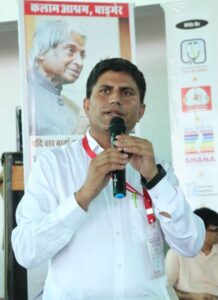
Dr. Bharat Saran: A Doctor of Dreams
Dr. Bharat Saran’s journey began in the challenging landscape of Rajasthan’s Barmer district. Born into a world where resources were scarce, he faced an education system devoid of teachers and devoid of guidance. Despite these odds, he held an unshakable dream of becoming a doctor, a dream that would lead to profound change.
Completing his 12th grade in a government school in 2003, Dr. Saran’s path was marked by economic hardships. Yet, undeterred, he joined a coaching institute in Kota, Rajasthan, while simultaneously tutoring financially disadvantaged students. Years of unwavering dedication bore fruit when he secured admission to a government medical college in Kota to pursue MBBS. However, his mission went beyond personal success; it led to the establishment of the ‘Fifty Villagers Seva Sansthan’ in Barmer, dedicated to providing free hostel facilities and educational support to orphaned students who had completed their secondary education.
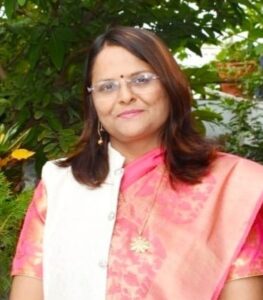
Dr. Lalita Sharma: Fostering Excellence through Diversity
Dr. Lalita Sharma, within the Abhakunj Welfare Society, has woven a diverse team of teachers and volunteers who selflessly dedicate their time and skills. This organization thrives on the contributions of retired professionals, homemakers, working professionals, and interns, with Dr. Lalita herself mentoring teachers, including retired professionals and engineers. Their collective mission is to shape the lives of underprivileged children, with a team of trained volunteers and interns from universities and colleges making valuable contributions.
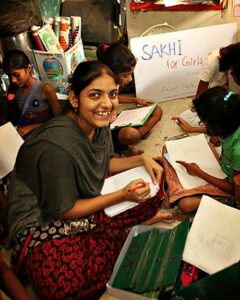
Aarti Naik: Breaking the Chains of Slum-based Girls’ Education Challenges
Aarti Naik’s story unfolds in Mumbai’s sprawling slums. Despite adversity and a substandard education system, she pursued her dream after failing her 10th grade, defying her parents’ wishes. Her determination revealed the urgent need to transform the outlook on girls’ education in her community. Aarti launched an initiative to reshape mindsets and break the cycle of poverty ensnaring many young girls in Indian slums.
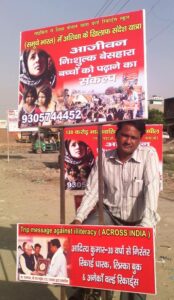
Aditya Kumar aka ‘Cycle Wale Guruji’: Pedaling Towards Education
Aditya Kumar from Farrukhabad, Uttar Pradesh, embarked on an extraordinary mission – providing quality education to underprivileged children while cycling across India. As ‘Cycle Wale Guruji,’ he made every place he stopped a classroom for the day, symbolizing the extraordinary efforts some educators make to bring quality education to those in need.
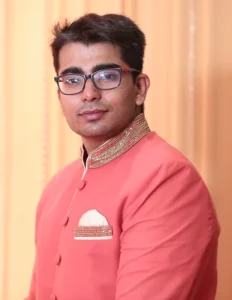
Keshav Datta: Creating Scalable Models for Social Welfare through Education
Keshav Datta recognized the transformative power of education from a young age and established the Sarvahitey NGO to create scalable models for positive change. His unwavering belief in the potential of education is inspiring a movement where everyone can contribute in their unique way, forging a better tomorrow for all in India.
On this World Teachers’ Day, let our hearts unite in celebration. We honor not only the heroes of yesteryears but also stand in solidarity with every educator shaping the future. They blur the lines between the roles we assign and showcase the limitless possibilities when we embrace the spirit of true education. Their tireless dedication and boundless passion illuminate the path of knowledge for generations to come. Together, we can uplift these unsung champions and ensure that the beacon of education continues to shine brightly, lighting the way for a brighter tomorrow.
To know more about such Educators, read our special issue dedicated to “Teacher Warriors” Read Here.
Newsletter

Young Birders’ Workshop Opens Registration for Children Aged 10-13 Years

STEMpedia Successfully Completed Codeavour 5.0- India’s National Innovation Fest

Reviving School Education: Countering the Coaching Centre Dominance
CBSE to Initiate Pilot for National Credit System in Grades 6, 9, and 11

The Role of Marketing in Education: Navigating the New Educational Landscape

From Overwhelmed to Empowered: Strengthening Educator Skills for Success

NCERT Introduces Bridge Month Programme for Class 6 Amid Textbook Transition

Indian Embassy Advocates for India-US Collaboration in Education Sector

Nurturing Healthy Behaviors: The Role of Schools in Shaping Health-Conscious Citizens

CBSE Updates Exam Structure for 11th & 12th Class; Concept-based Questions Now 50% of Weightage

Sharing the spotlight: When parent and child take board exams together

Rebalancing the Scales: The Urgent Call for Humanities in STEM-Dominated Curricula

Palette of Possibilities: Nurturing Creativity in Schools through Modern Art

Empowering Minds: The Journey of My Guide Inside with Christa Campsall

The Potential of an Entrepreneurial Development Programme for Primary School Students

FPSB India and IIM Bangalore Forge Strategic Partnership to Advance Financial Education

1 in 6 School-Age Children Face Cyberbullying: Calls for Immediate Action

GD Goenka Group To Establish 12 New Schools from April 2024

World Theatre Day: Let Theatre Arts Make Classroom’s Showtime Spectacular!

Lessons Beyond a Cricket Pitch: An IPL-Inspired School Curriculum

Post-pandemic: Embracing Well-being in India’s Schools with My Guide Inside

The Intersection of Happiness and Technology in Education

India-Bhutan Strengthen Ties: Focus on STEM Education

Life of My Father: Dr. Jagdish Gandhi, a Pioneer in Education

Jharkhand Introduces Innovative Schemes to Support Higher Education Aspirants

Life of My Father: Dr. Jagdish Gandhi, a Pioneer in Education

Post-pandemic: Embracing Well-being in India’s Schools with My Guide Inside

Mayo College Announces New Leadership

Empowering the Future: The Success of Beti Bachao Beti Padhao in Girls’ Education

Is Students’ Data in Safe Hands in a Digital World?

Central Government Sets New Framework for Coaching Centres

FPSB India and IIM Bangalore Forge Strategic Partnership to Advance Financial Education

Radio Broadcasting in Schools: Creating a Platform for Student Voices

India to recognise Farsi as a classical language under New Education Policy

Farewell to a Pioneer: Dr. Jagdish Gandhi’s Enduring Legacy in Education

Anticipating a Progressive Leap: The Education Sector’s Hopes for Union Budget 2024

Kerala Introduces ‘Water-Bell’ Initiative in Schools to Boost Hydration

Lexicon Schools Spark Innovation with STEAM Fest

The Need to Preserve Newspapers for Bias-Free Education

A Voice for All Ages: The Enduring Legacy of Ameen Sayani in Indian Education

Target Publications hosts workshop for grade 10th and 12th students of Snehasadan Shelter Homes and Reap NGO

Seth M. R. Jaipuria School launches CBSE School in Bhiwadi, Rajasthan

The Rising Leaders’ Summit 2024: A Timeless Learning for Future Educational Leaders

From 2025-26, Indian Students to Get Two Opportunities to Sit for Board Exams

International Women’s Day 2024: Are We Not Special?

ISRO Launches Young Scientist Programme 2024 for Budding Space Enthusiasts

Can Hindi Become the Next Global Language?

Teach for India Invites Applications for its 2024 Fellowship Program

Ministry of Women and Child Development Unveils National Curriculum Framework for Early Childhood Care and Education

World Theatre Day: Let Theatre Arts Make Classroom’s Showtime Spectacular!
SGEF2023 | Special Address by Rama Datt, Trustee, Maharaja Sawai Man Singh II Trust, Jaipur

ScooNews | After Movie | ScooNews Global Educators Fest 2023

Aftermovie | NIES2 UP Chapter | 21 Jan 2023

WEBINAR | Gamification in Education: How Digital Badges Can Boost Student Motivation and Engagement

ScooNews | WEBINAR| Importance of Physical Activity for Children at School | Plaeto

SCOONEWS | WEBINAR | WHY DIGITIZING YOUR SCHOOL IS A MUST | TEACHMINT

Keynote Address | Lakshyaraj Singh Mewar

Anurag Tripathi, Secretary, CBSE at SGEF2022

How schools can nurture every student’s genius

Aftermovie | SGEF2022 | Jaipur

Li Andersson | Minister of Education | Finland

Anurag Tripathi, Secretary, Central Board of Secondary Education (CBSE) discusses NEP2020

ScooNews | Early Ed Asia 2019 | Aftermovie
#PodarECEconf : Pursuing quality ECE

#CBSE Class XII #Results #Highlights

The interesting story of India’s educational system | Adhitya Iyer

A young scientist’s quest for clean water

The Danger of Silence: Clint Smith

National Digital Library of India is an initiative by HRD Ministry

Remembering Kalpana Chawla on her birthday!

Message from Sadhguru for Students!
Message from Sadhguru for Students!

The Untapped Genius That Could Change Science for the Better

Eddy Zhong: How school makes kids less intelligent TEDxYouth@Beacon

#TEDxCanberra : What if every child had access to music education…
Trending
-
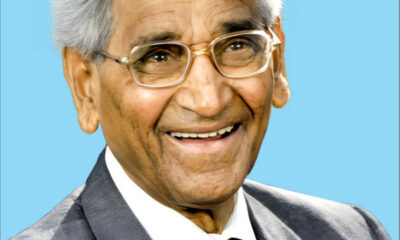
 Inspiration1 month ago
Inspiration1 month agoLife of My Father: Dr. Jagdish Gandhi, a Pioneer in Education
-

 Education4 weeks ago
Education4 weeks agoPost-pandemic: Embracing Well-being in India’s Schools with My Guide Inside
-
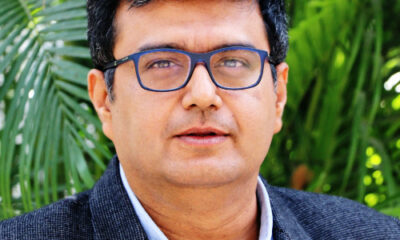
 Education2 months ago
Education2 months agoMayo College Announces New Leadership
-
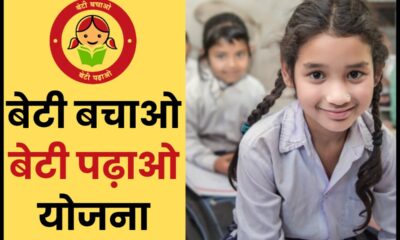
 Education3 months ago
Education3 months agoEmpowering the Future: The Success of Beti Bachao Beti Padhao in Girls’ Education
-

 Knowledge3 months ago
Knowledge3 months agoIs Students’ Data in Safe Hands in a Digital World?
-

 Education3 months ago
Education3 months agoCentral Government Sets New Framework for Coaching Centres
-
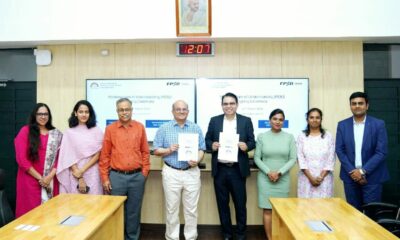
 Education3 weeks ago
Education3 weeks agoFPSB India and IIM Bangalore Forge Strategic Partnership to Advance Financial Education
-

 Education2 months ago
Education2 months agoRadio Broadcasting in Schools: Creating a Platform for Student Voices
-
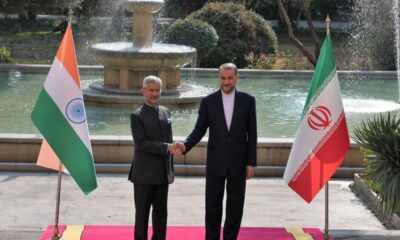
 Education3 months ago
Education3 months agoIndia to recognise Farsi as a classical language under New Education Policy
-
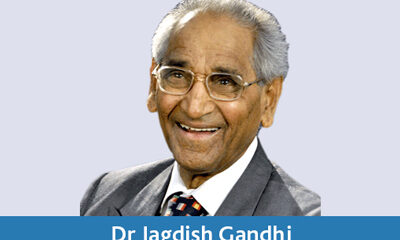
 Education3 months ago
Education3 months agoFarewell to a Pioneer: Dr. Jagdish Gandhi’s Enduring Legacy in Education



